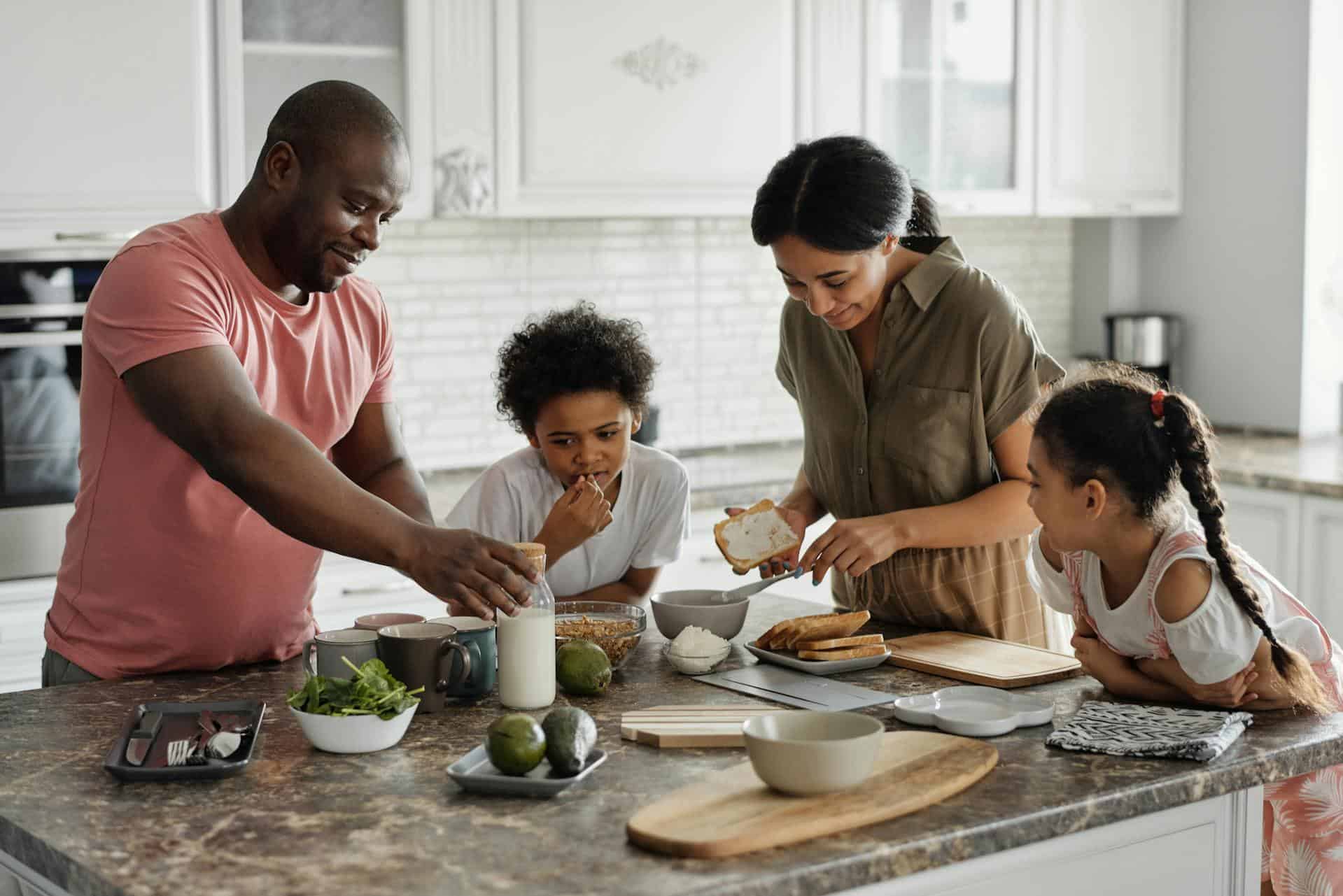
Question: How to Stay Safe in the Kitchen with Kids?
Answer: To stay safe in the kitchen with kids supervise closely, keep hot surfaces and sharp objects out of reach, use back burners, turn pot handles inward, and secure cabinets with childproof locks.
Kitchen Safety with Kids: A Practical Guide
Kids love to help in the kitchen. Their enthusiasm adds joy to cooking but also introduces safety risks. This guide provides practical tips for creating a safe and enjoyable kitchen environment for you and your children. We’ll cover important safety measures, from smart appliance use to basic knife skills and safe food handling practices. Let’s explore how to make cooking with kids a fun and safe experience.
Appliance Awareness
Keep hot appliances out of reach. Store them in high cabinets or at the back of counters. Turn pot handles inward to prevent children from grabbing them. Unplug appliances when not in use. This simple step prevents accidental activation. Teach children about the dangers of hot surfaces. Explain that they should never touch a hot stove or oven. Use oven mitts when handling hot dishes. Show children how to use them properly.
Engage children in safe appliance activities. Let them press buttons on the microwave or blender under your supervision. Explain how each appliance works. This fosters their understanding of kitchen safety. Discuss potential hazards with each appliance. This helps children develop a healthy respect for kitchen tools.
Click here for more information on cupboard refacing Toronto
Related Article: What Can I Use Instead of a Baby Gate?
Related Article: How Can We Make the Kitchen Safe for Infants?
Food Safety Fundamentals
Teach children about handwashing. Explain the importance of washing hands before and after handling food. Use warm water and soap. Make it a 20-second scrubbing session. Supervise handwashing to ensure they do it thoroughly. Explain why handwashing prevents the spread of germs. This helps them understand the connection between hygiene and health.
Show children how to wash fruits and vegetables. Use cool running water to rinse produce thoroughly. Explain that this removes dirt and pesticides. Teach them about safe food storage. Explain the importance of refrigerating perishable foods promptly. Show them how to store leftovers properly.
Fire Safety First
Install smoke detectors and keep them working. Test them regularly to ensure they function properly. Have a fire extinguisher readily available in the kitchen. Know how to use it. Teach children about fire safety rules. Explain what to do in case of a fire. Practice a fire escape plan with your family. Establish a meeting point outside the home.
Keep flammable materials away from the stove. Store dish towels, paper towels, and oven mitts away from heat sources. Never leave cooking unattended. This is especially important when cooking with oil or grease. Teach children about the dangers of playing with fire. Explain that matches and lighters are not toys.
Cleanliness and Organization
Wipe up spills immediately. This prevents slips and falls. Keep the floor clear of clutter. This eliminates tripping hazards. Store cleaning supplies safely. Keep them out of reach of children in a locked cabinet or high shelf. Teach children about kitchen hygiene. Explain the importance of cleaning up after themselves.
Involve children in cleaning tasks. Give them age-appropriate chores like wiping counters or sweeping the floor. Make it a game to see who can clean up the fastest. This encourages a sense of responsibility and helps maintain a tidy kitchen.
First Aid Preparedness
Keep a well-stocked first aid kit in the kitchen. Ensure it contains bandages, antiseptic wipes, and pain relievers. Know basic first aid procedures. Learn how to treat minor burns and cuts. Post emergency numbers near the phone. This ensures quick access in case of an accident. Teach children basic first aid skills. Show them how to apply a bandage or use an ice pack. Emphasize the importance of seeking adult help for any injury.
Discuss common kitchen hazards. Explain the dangers of sharp knives, hot surfaces, and cleaning products. Role-play different scenarios to practice appropriate responses. This helps children develop quick thinking and problem-solving skills.
Conclusion – How to Stay Safe in the Kitchen with Kids?
Creating a safe kitchen environment for children requires planning and awareness. By implementing these simple tips, you can minimize risks and foster a love for cooking in a safe and enjoyable way. Remember, teaching children about kitchen safety is an ongoing process. Reinforce these safety guidelines regularly and encourage open communication. With your guidance, children can confidently participate in kitchen activities while developing essential life skills. Enjoy the journey of cooking together and creating lasting memories in a safe and nurturing environment.
Making kitchen safety a family affair empowers everyone to contribute to a secure and enjoyable cooking experience. By working together and following these guidelines, families can create delicious meals while prioritizing safety and well-being in the kitchen.

Blue Malue Get in touch with Blue here.
